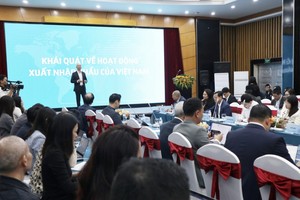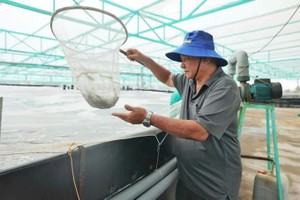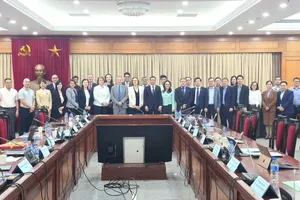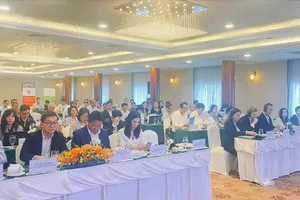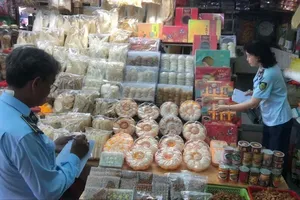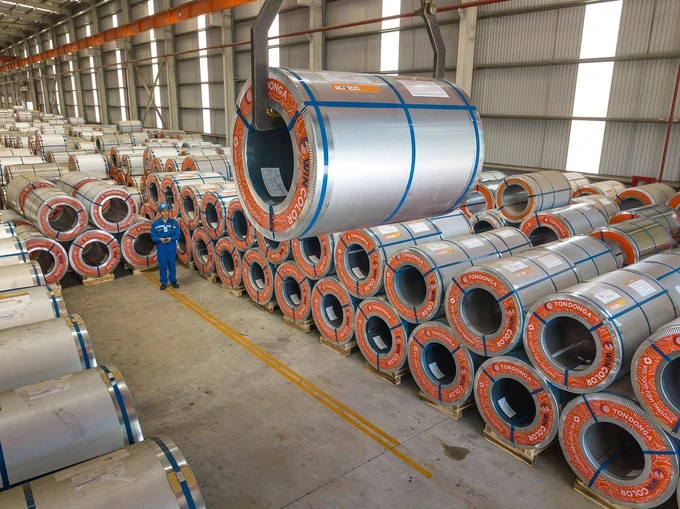
U.S. President Donald Trump signed an executive order yesterday imposing a 25 percent tariff on all imported steel and aluminum products, affecting key trading partners such as Canada, Mexico, Japan, South Korea, and Vietnam. Set to take effect on March 4, 2025—less than a month from now—this policy presents significant challenges for Vietnamese steel and aluminum exporters, leaving them little time to adapt their business strategies and mitigate its impact.
Risk of decreasing market share in the US
Vietnam is one of the largest steel exporters to the US, behind Canada, Brazil, Mexico and South Korea. According to data from the General Department of Customs, in 2024, Vietnam exported 12.16 million tons of iron and steel, earning US$8.75 billion, up 10.4 percent in turnover and 15.8 percent in output compared to the same period last year.
The US is one of Vietnam's main export markets with about 2.5 million tons of steel, accounting for about 8 percent of total US steel imports. Meanwhile, Canada accounts for 20 percent, Brazil 13 percent, Mexico 11 percent and South Korea 10 percent.
According to the Vietnam Steel Association, before 2025, the US has repeatedly imposed anti-dumping and anti-subsidy duties on steel and aluminum products imported from Vietnam. For example, in 2019, the US imposed duties of up to 456.23 percent on corrosion-resistant steel and cold-rolled steel imported from Vietnam if using raw materials originating from South Korea or Taiwan (China).
Vietnam’s steel export turnover to the U.S. has declined sharply following the tariff implementation. The country’s steel and aluminum market share in the U.S. dropped from 10 percent in 2020 to 8 percent in 2022 and is projected to fall further to around 5 percent in 2024. Leading exporters, including Hoa Phat Group (HPG), Hoa Sen Group (HSG), and Nam Kim Steel (NKG), are bearing the brunt of the impact due to their significant reliance on the U.S. market.
The recently implemented 25 percent tax on steel and aluminum imports from the United States is anticipated to have a minimal impact on Hoa Phat Group, a dominant player in the domestic steel market with more than 8 million tons of steel being sold in the market each year. Hoa Phat, which supplies over 70 percent of the domestic steel demand and exports to over 40 countries, has a relatively limited exposure to the U.S. market.
According to the enterprise, the US previously imposed a 25 percent tax under the US security law, so this tax imposition is not new, but only supplementary. Their imposition of tax will have a global impact, Hoa Phat cannot avoid it, but the level is not large.
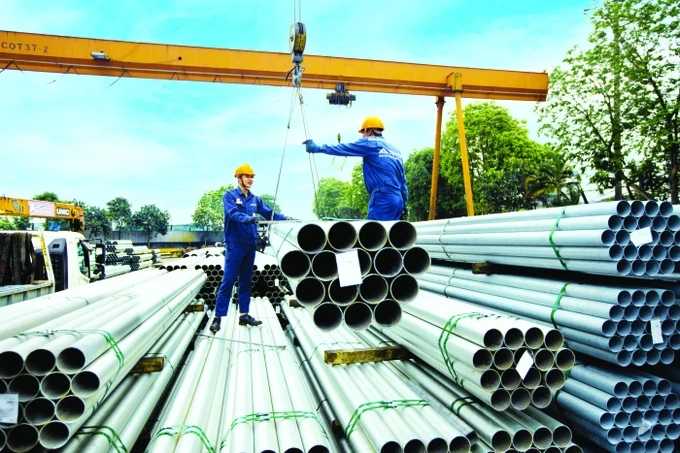
According to statistics from KB Securities Company (KBSV), galvanized steel exports to the US - Mexico market contributed 18.6 percent, 26.1 percent, 31.9 percent of revenue of Hoa Sen Steel, Nam Kim Steel and Dong A Steel in 2024 respectively. KBSV believes that the tariff measures from the US will have a general negative impact on the revenue growth prospects of galvanized steel manufacturing enterprises. However, Nam Kim Steel will be under the greatest pressure due to the high subsidy level and the large proportion of revenue from the US - Mexico.
A representative from Toan Thang Steel Company emphasized that the impact of the 25 percent tax on U.S. steel and aluminum exports would be mitigated by the company's diversified export markets. Furthermore, the anticipated decline in global steel and raw material prices by 5 percent -35 percent by the end of 2024 minimizes the potential impact of any short-term raw material price increases.
While the U.S. market share may decrease, Toan Thang Steel Company has mitigated this potential impact through a diversified export strategy, focusing on Southeast Asian markets.
Furthermore, the company has benefited from increased domestic demand, driven by government initiatives that encourage greater private sector participation in public projects. This strategic approach is reflected in a projected 50 percent increase in orders for the first quarter of 2025 compared to the previous quarter, reaching an estimated value of $7 million.
Developing appropriate response strategies
At the January 2025 regular Government meeting, Prime Minister Pham Minh Chinh directed relevant ministries and sectors to develop strategies to navigate the escalating global trade war. He emphasized that Vietnamese enterprises must diversify export markets, restructure supply chains to reduce reliance on high-taxed raw materials, and invest in technology to enhance product value and maintain competitiveness. To mitigate the impact of the new U.S. tariffs, the Government will provide support through financial aid, credit incentives, and trade promotion policies.
Vietnamese enterprises can consider diversifying export markets, reducing dependence on the US market. Some potential markets to target include the European Union (EU), Japan, South Korea, the Middle East and countries in the ASEAN region, where demand for steel and aluminum is increasing, said Deputy Director Pham Binh An of the Ho Chi Minh City Institute for Development Studies. In addition, improving product quality, optimizing production costs and finding new potential markets are also necessary solutions, he added.
According to economic experts, a comprehensive solution requires Vietnam to simultaneously strengthen bilateral negotiations with the U.S. while making most of existing free trade agreements to explore new markets and mitigate the potential risks associated with the U.S.'s new tax policy.
The Ministry of Industry and Trade should take decisive action to effectively implement strategies aimed at mitigating the effects of tax imposition. This includes providing support to businesses to enhance their competitiveness, encouraging the diversification of export markets, and intensifying negotiations with the United States to identify solutions for lowering tax rates.
More importantly, the Ministry needs to closely monitor market developments to provide timely guidance, enabling businesses to proactively manage production and exports. Additionally, it should accelerate the implementation of financial, credit, and technology support policies to help enterprises lower production costs and enhance product quality. Active participation in free trade agreements is also crucial to expanding markets and mitigating risks from global trade fluctuations.
Vietnam should also conduct a thorough assessment of the new U.S. tariffs’ impact and formulate effective response strategies to safeguard its export sector.
